Apple iPhone 6s Review
UPDATE: You can now read our iPhone 7 review and iPhone 7 Plus review!

Introduction
S-generation iPhones have always been slightly less exciting than their full-fledged, S-less brethren, but looking at the improvements Apple's doing with this year's iPhone 6s, we honestly don't feel any less excited than when we first held the iPhone 6 in our hands at about the same time last year.
In fact, the iPhone 6s (along with the 6s Plus) has the potential to be the most disruptive piece of mobile technology to appear in recent years, as it aims to add a whole new dimension to the way we use our handsets. 3D Touch, as this new technology is called, is a big, bold undertaking by Apple. Perhaps more importantly, though – it's an example of meaningful innovation; the kind of which we rarely see these days.
Along with the potentially game-changing 3D Touch, the iPhone 6s also brings a fairly long list of other improvements, such as faster processors, better cameras, more RAM, Siri and Touch ID upgrades, tougher aluminum body with stronger screen glass, more efficient wireless modem… Many of these enhancements may appear to be more or less trivial, but they help shape Apple's newest phone up as a complete and enticing package – exactly the type of product Apple wants to have in this incredibly dynamic landscape.
With a strong hardware foundation and all the new features enabled by iOS 9, the iPhone 6s seems to be destined for success. Let's see if it lives up to its promise!
Design
A year later, the iPhone 6's appearance is just as attractive and enigmatic.
As you'd expect, the iPhone 6s keeps the same exact styling of its predecessor. In this case, that's not a bad thing at all, seeing that it's an exquisite design that is both attractive and practical. It consists of an aluminum unibody that holds all the internals in place, as well as an LCD screen panel that's protected by an even stronger glass cover than before – one that is produced using — in Apple's own words — a “dual ion-exchange process”. It sure sounds fancy and what not, but in reality, it's believed to be none other than Corning's Gorilla Glass 4. This particular bit of into isn't official, but it has been proven that iPhones have been using Corning's magical glass since day one, so chances are Gorilla Glass 4 is what's protecting the display of the iPhone 6s (and 6s Plus) as well. Gorilla Glass panels usually aren't unscratchable, but they sure aren't easy to crack or shatter.
Back to that aluminum unibody for a second, it's worth pointing out that Apple is now using a stronger, 7000 Series aluminum, which is promised to be considerably stronger than the one used in the iPhone 6 and 6 Plus. Now, even if you accidentally forget your iPhone 6s in your back pocket and happen to put it under the pressure of your perfectly shaped butt, the phone should prove to be solid enough to retain its original geometry. Disclaimer: The last clause may not hold true if your name is Nicki Minaj.
The iPhone 6s has also kept the more controversial elements of the appearance of its predecessor, such as the antenna lines and protruding camera. And while we still aren't into the idea of the camera jutting out from the surface of the back, the shapes of the antenna lines add an element of sophistication and artistry to the appearance. After all, can it be named real beauty, if its figure doesn't carry a hint of strangeness – something to continuously draw your mind towards it?
Physically, the iPhone 6s is 0.28” (7.1 mm) thick, while its weight is 5.04 oz (143 grams). In other words, it has grown ever so slightly thicker and heavier than the iPhone 6 and its 0.27” (6.9 mm) thickness and 4.55 oz (129 gr) weight. And that's about it when it comes to their physical differences.
All physical buttons of the iPhone 6s (volume rocker, power key, mute switch, and home), are located in their usual, easy to reach positions. They tend to feel just a tad softer when being pressed, compared to the keys of the iPhone 6 units we've tested, but this may be limited to our review unit. The 3.5mm audio jack and the Lightning connector are once again to be found on the bottom side of the handset, along with the single loudspeaker.
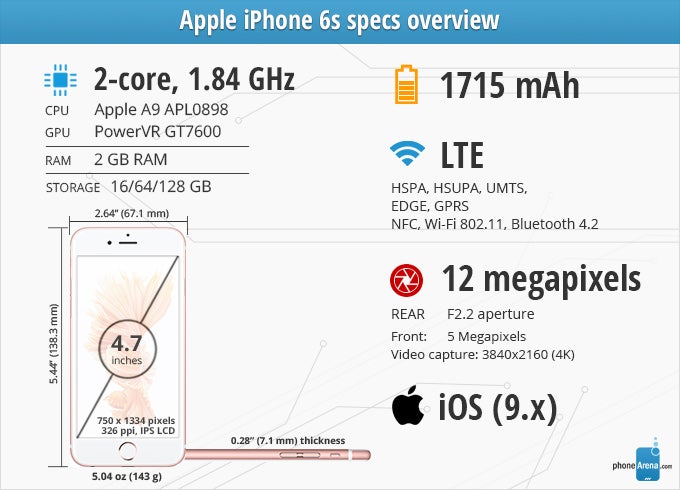
Display
First ever pressure-sensitive phone display tries to convince us there should be more to a screen than simply tapping and swiping.
On the surface, it may seem like Apple hasn't changed much in the way of display technology, but this is not entirely true. The screen size of the iPhone 6s remains the same – 4.7 inches, while the resolution is also unchanged – 750 x 1334 pixels. This may not seem like much, compared to the 1080 x 1920- and 1440 x 2560-pixel screens used by some Android phones, but in reality, it leads to a pixel density of 326 ppi, which is still a very high number even by today's computing standards. Thus, the iPhone 6s's display delivers fine details, a nice and clean image that is easy to read and view. Going forward, we can see the slight benefit of the resolution eventually being cranked up to something like 1080 x 1920 pixels, but at the time being, it's probably wiser to stick with 750 x 1334 for the power efficiency and performance benefits.
Interestingly, the Apple iPhone 6s's maximum brightness has suffered a bit. While last year's model could crank it up to the excellent 600 nits, the 6s “only” reaches 550 nits. Well, that's still a great result which makes it relatively easy to view the display even under bright sunlight, but we know it can be even better. Meanwhile, pulling the brightness slider all the way down gets us to the reasonable 6 nits. At such a low level, the screen is easy on the eyes when viewed in the dark, though it would have been beneficial if it could go even lower than that, like some of its rivals, such as the Galaxy S6 (goes down to 2 nits), or the G4 (also goes down to 2 nits). The automatic brightness control option works very well, as it manages to pick the optimal brightness level in almost any situation.
The iPhone 6 had very good color balance, but there was definitely room for improvement. With the 6s, we're glad to see Apple moving forward: screen color temperature has improved from around 7150 K in last year's model to around 7050 K in the 6s. With the ideal value considered to be around the 6500 K mark, we can see that the iPhone 6s still shows a slight tendency towards a colder image, but overall, it's among the best in this respect. Going forward, we expect Apple to get rid of the excessive blue in the next generations of the product. At present, due to slight bluish tint, the Delta E grayscale value stands at 3.23, while relative color accuracy, reflected in the Delta E rgbcmy value, is the splendid 1.47. If you aren't into the advanced terminology, these numbers simply mean the display is very accurate when it comes to color reproduction.
The screen's average gamma reading is as good as it gets: 2.21, with no artificial contrast boosts detected. This ensures the correct brightness and detail preservation of all images that will be displayed.
3D Touch (hardware)
There really are two aspects to the new pressure-sensing 3D Touch technology that is now built into the display. We'll look at it from hardware and software perspective.
From hardware standpoint, 3D Touch doesn't interfere with the screen's visual characteristics in any way. Instead, it relies on 96 pressure sensors (in 8x12 grid) built into the backlight panel of the display to detect the level of force with which you press on the screen. These sensors detect the microscopic changes in the distance between the display's cover glass and the backlight, and work in concert with the touch sensor and the accelerometer, in order to determine the exact point and level of force application. The iPhone 6s recognizes two levels of force beyond the simple tap/touch.
But in order for the user to feel exactly when they have applied enough force, Apple had to implement an improved version of the vibration motor, which it calls Taptic Engine. While, Apple says, the typical vibration motor of a modern smartphone takes about 10 oscillations to reach full power, the Taptic Engine does so with just 1 oscillation, allowing for a faster and tighter response to the user's actions. This response materializes in the form of two slightly different haptic feedback events: a 'mini' tap (lasting 10 milliseconds), and a 'full' tap (lasting 15 milliseconds). The mini tap, as you can guess, is felt slightly lighter, and is used to indicate the Peek gesture, while the full tap is engaged together with the Pop gesture. In reality, the difference in how mini and full tap feel doesn't seem to be that profound.
Interface
Peek 'n' Pop gestures make the iOS 9 user experience unique on the iPhone 6s.
iOS 9, which comes standard on the iPhone 6s, doesn't introduce any game-changing principles with regards to the user interface. The home screen is the familiar icon grid, with only the Clock and Calendar icons exhibiting a dynamic look: the clock icon shows the current time, while the calendar icon indicates the correct date. Pretty much everything else is static, which isn't necessarily a bad thing. The notification center, accessible through a swipe-down from the top edge, is where the dynamic stuff may take place, as this is where you can add various widgets, provided that your apps offer any. At the very least, you'll have access to the stock widgets, like weather, calendar, reminders, and stocks. And, if you're the type of user who just can't say 'no' when apps ask you to allow them to spam you with notifications, you'll be glad to know that with iOS 9, you'll be able to easily clear all notifications from a certain day, instead of having to clear them separately for each app.
The search engine is obviously an area where Apple wants to focus and deliver improvements. We can see the company refine and push search functionality across all of its devices, and the iPhone 6s is by no means an exception. In fact, iOS 9 marks the return of the dedicated Spotlight Search homescreen page, which was removed with iOS 7 and replaced by a swipe-down homescreen gesture. The advantage of the swipe-down gesture is obvious, in that it grants you quick access to search regardless of the home screen page you're on, but apparently Apple thought that's not enough, thus re-enabling the dedicated search page.
In what's basically another dimension of Apple's march towards improved search capabilities, Siri has now gotten smarter and more proactive: she'll suggest appropriate apps for you to run, based on place and time of day, and she'll also do more complex things like reminding you of something at a specific time or place. For example, if you ask her to remind you to do the dishes once you get home, then that's what she'll do, in the most helpful and friendly way she can. However, when we tried asking her to do the dishes for us when we get home, she only answered with a cold, blank stare, pretending her language processing algorithms only stretch so far. OK, we said, that trick may work for now, but in a few years time, you'll have no excuse!
iOS 9 adds a whole host of other features and goodies. There's the new News app (understandably, there isn't an old News one), improved Notes application, Apple Maps with transit directions, and more. A particularly cool addition to the stock keyboard of the iPhone 6s is that it can be used as a trackpad, upon a force-press.
FOR MORE DETAILS ON IOS 9 AND ITS INNER WORKINGS, READ OUR IOS 9 REVIEW
3D Touch (software)
We've covered how 3D Touch works, but what does it actually do to improve our user experience? In the introduction, we mentioned that the iPhone 6s is an example of meaningful innovation, and when we said that, we mostly meant the way Apple has integrated 3D Touch into the user interface.
3D Touch enables two new gestures across the system: Peek and Pop. Peek corresponds to a slight press on the screen, while Pop is engaged when the user presses harder. Throughout most of iOS 9's built-in applications, Peek (or, in other words, a light press) causes a small preview window to appear – a preview of the item you have pressed on. For example, in Mail, you can press on an email to reveal a preview of that message. Lifting your finger off the screen will simply cause the preview to disappear. This way, you can quickly glance through your emails without having to open and close them one by one. Back to that position when you're looking at the message preview window – should you follow this up with a harder press, then the message will quickly “pop” onto your screen in its full glory.
Another great example of the usefulness of 3D Touch is the home screen, where force-touching an app icon brings up a small menu of shortcuts, linked directly to some of the most important functions of the app. Force-touching the Camera icon, for instance, will give you shortcuts to “Take Selfie”, “Record Video”, “Record Slow-mo”, and “Take Picture”. Meanwhile, pressing the Mail app icon will present you with direct access to “Inbox”, “VIP”, “Search”, and “New Message”. Imagine the huge time savings this new dimension of user interface is going to bring in the long term!
Want more? Well, let's say someone texts you a location. You can then simply light-press the location link, and it'll show you a map preview. From there, a harder press will make the Maps app “pop” onto the screen, with the said location highlighted. In the Photos app, you can light-press photos while in grid view to get quick, relatively big previews of them, without actually opening a single one.
At this point, you might have started wondering if the same gestures are going to work with third-party applications like Facebook, Instagram, Angry Birds, and so on. The answer is yes… if and when the developer implements them. The good news is that some major apps already support 3D Touch. In Instagram, you can peek at image thumbnails and pop them. Shazam, on the other hand, utilizes 3D Touch in a very efficient way – allowing you to start 'shazaming' a song straight from the homescreen. Meanwhile, Facebook will soon let you use quick shortcuts from the homescreen to jump straight into status update, take a photo and post, or check in. As far as games go, Apple has demoed force-touch in a single title – where the player uses pressure to zoom into their enemies. It's called Warhammer 40,000: Freeblade, and it's expected to become available on the App Store sometime around the holiday season. But, going forward, it'll definitely be interesting to see how developers will take advantage of 3D Touch both in apps and games. Needless to say, the possibilities seem to be quite big, but currently, the vast majority of titles are yet to be updated with some sort of 3D Touch support. And, we believe it'll take some time for developers to figure out the best ways to utilize 3D Touch in their applications. The prospects, however, are very exciting.
Processor and Memory
If you're looking for a fast, tight response, you should look no further.
Ever since its very first generation, the iPhone has always been the showcase mobile device when it comes to performance: both raw and perceived. The iPhone 6s is yet another huge leap forward, ensuring that it keeps its industry-leading position secured. It does so by employing a new chipset, called A9.
Like all recent iPhone processors, the A9 features a dual-core, 64-bit CPU, only this time, it's called Twister and can go up to 1840 MHz. This year's jump in raw computing power appears to be particularly big, with Apple promising up to 70% increase in CPU performance, compared to the A8's CPU in the iPhone 6. Excitingly, the new PowerVR GT7600 GPU is said to deliver an even bigger performance increase – up to 90% compared to the previous generation. Apple has also doubled the amount of RAM: from 1 GB in the iPhone 6 to 2 GB in the iPhone 6s.
All of this silicon goodness wouldn't mean a thing if real-world performance wasn't up to snuff, but the iPhone 6s is simply the fastest phone we've used to date. What makes this observation all the more valid is that the phone's operation is remarkable in the consistency of its tight response: moments of fluid motion aren't interrupted by episodes of unexpected lag or low frame-rates; instead, the iPhone 6s moves in a constantly swift and reliable manner. Sadly, the recent launch of iOS 9 introduced a bunch of instability issues, but those usually get resolved in a timely fashion through software patches.
The benchmark scores also indicate that we’re dealing with a formidable chipset here – one that decidedly surpasses the competition. On the graphics processing side, the iPhone 6s proves its point once again, dishing up the most impressive GPU scores we've seen. It pretty much demolishes most of its rivals, which is partly due to their unreasonably high display resolutions. In the graphics-intensive GFXBench tests, the iPhone 6s is able to maintain an obnoxiously impressive frame rate of 59 fps on the lighter T-Rex HD (it basically hits the frame-rate ceiling on this test), and the staggering 56 fps on the incredibly demanding Manhattan on-screen test – that’s just breath-taking!
Sadly, though, Apple hasn’t changed its stance with the phone’s storage options. Regrettably, the base model still sits with a paltry 16GB of memory, which is pretty bad considering that 4K video capture can quickly fill things up. We’d definitely recommend that you pick up either the 64GB or 128GB capacities if you intend on capturing significant amounts of 4K or 1080p footage, installing a lot of applications and games, or storing media files such as music, photos and movies on the internal memory.
Internet and Connectivity
Mobile Safari has always been proven to excel in handling our needs when it comes to surfing the web, so it’s no surprise that it continues to do so here as well with the iPhone 6s. All of the endearing characteristics are here again, such as speedy page loads, buttery-smooth performance and intelligent navigational controls that make sense, such as high-sensitivity pinch-zooming and vertical scroll snapping. All of this is complemented by industry-leading text font size inflation for easier reading.
What’s new with the experience, however, is again related to 3D Touch and how it helps to enhance the experience. Using light 3D Touch on a link, its Peek feature kicks in to show us a small preview into what we’re targeting – as opposed to blindly committing by pressing on the link like we normally would. As we're looking at the preview, we can then choose to fully enter that new page by pushing slightly harder to activate Pop. This seems like a rather neat browsing enhancement, but we still feel it's a bit early to draw any definitive conclusions – it's yet to prove itself as a useful and practical feature that we'd keep using in the long term.
Beyond its widespread LTE band support, the iPhone 6s is packaged with the latest and greatest in terms of connectivity. It consists of things like aGPS with Glonass, Bluetooth 4.2, dual-band Wi-Fi 802.11 a/b/g/n with MIMO, and NFC for your Apple Pay needs. LTE is ensured by LTE-A Cat 6 speeds of up to 300 Mbit/s down and 50 Mbit/s up, but of course, there's also the usual 3G HSPA support for the gloomy times when LTE coverage just isn't around.
Camera
Always the versatile one for a variety of situations, the new 12-megapixel camera delivers great still shot quality, while its video recording and editing capabilities have gone even further.
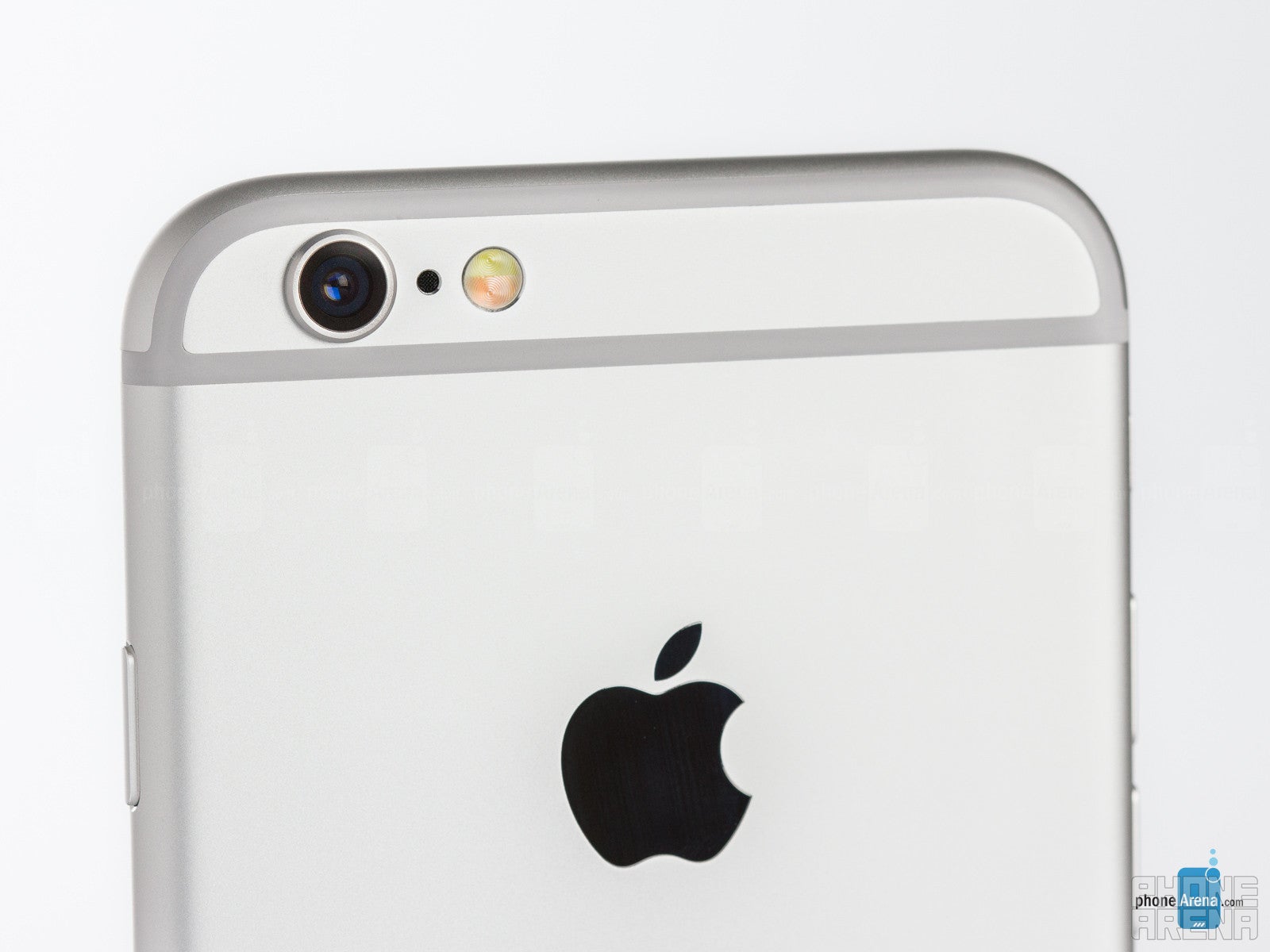

Turning our attention to the camera interface, there’s nothing particularly new with its feature set on the surface. Yes, it’s still a straightforward experience, which is what you want when you’re out to just capture the moment, but it lacks the deeper set of controls that some other high-end smartphones offer out of the box – such as some more advanced manual controls.
The familiar selection of shooting modes is once again present here, including panorama and HDR, but don’t think that’s all to the experience. Apple has added something new to the mix; something called Live Photos. It works on the same premise as HTC’s Zoe. The camera captures and stores 1.5 seconds before and 1.5 seconds after the user has pressed the camera shutter to take a picture, with the result being a short video highlight that you can later view from the gallery. Just hard-press on the selected picture, and the stored Live Photo moment will play instantly, complete with sound. Essentially, it gives your photos a different type of dynamic, in the way that they appear to “come to life”. Some folks relate it to a GIF animation, but it’s not exactly the same, partly because Live Photos have sound. This new feature sure is interesting and undoubtedly has potential to shake things up inside our photo galleries, but in our experience, it appeared to need a bit of further polishing. More often than not, the captured footage prior to the user tapping the camera shutter comes out nice and adds some intrigue to the experience of photo viewing, but most of the time, the last moments that are captured after the shot end up simply showing the user lowering the camera down, capturing a few frames of their feet along the way. At least that's how most of our Live Photos ended up like, and we're hearing other people share this experience too. If Apple is to successfully make Live Photos a desired part of the regular photo taking process (after all, the feature is turned on by default), we feel it'll have to tweak things a little, perhaps shortening or altogether eliminating the recorded part that comes after the moment of pressing the camera shutter. Thankfully, if you don't happen to be a fan of this whole Live Photos affair, you can easily deactivate it by tapping the corresponding symbol in the camera UI.
Every single year, the iPhone is always a contender in the photo space, just because it’s so versatile to use in an assortment of situations. Undoubtedly, it’s also one of the fastest with its start-to-finish time! You’ll be able to snag a photo in under 2 seconds most of the time, and that even includes HDR shots as well, ensuring that you’ll never have a missed opportunity.
Image quality
Now comes the most crucial part of it all – the still image quality. Above all, the jump to a 12-megapixel camera translates to more detail captured by the camera, providing some additional leeway for image cropping or using the digital zoom. Not only does it obtain more detail from the scene, but it’s pleasantly sharp throughout the range as well – so that there’s equal focus balance across the scene. Of course, that changes when we’re dealing with portrait or macro shots, as the camera coughs up some bokeh to the sections outside of the focus area, but it’s not too over-powering with its out-of-focus effect, which can be attributed to its narrower f/2.2 aperture.
Colors, for the most part, tend to favor warmer tones. It’s not too overblown, thankfully, seeing that the saturation isn’t as profound as it is with some other phones. There’s also good handling of exposure and dynamic range, such as the case with scenes where the clouds try to compete with the darker color tones of a landscape shot. For the most part, the iPhone 6s does a pleasant job of balancing between the two, so that the sky isn’t too washed out to better expose the scene.
Speaking of contrasting shots, its HDR mode does well to soften strong lighting sources in the scene – to balance out the overall dynamics. That means shadows receive a slight boost in exposure, while highlights are subdued a bit. Honestly, we feel the HDR effect's implementation here is a bit too conservative, but that's not necessarily a bad thing. We’re also pleased that we don’t see a whole lot of color saturation or sharpening to give the shot an artificial quality.
Indoors, under artificial lighting, the iPhone 6s once again does very well. At times, it tends to sprinkle some yellow hues to the shot – producing yet again warmer looking images, but it's nothing too intensive. Details manage to retain their sharpness without being too subdued, but when shooting in complete darkness, we noticed that the phone often struggles to lock a correct focus.
Selfies are significantly better, too, with the new 5-megapixel iSight camera around the front. Indeed, not only is there more detail to work with this time around, but taking selfies in dark lighting conditions is also much-improved. There’s actually a new flash of sorts for the front camera – the screen. Courtesy of a new, dedicated display chip, triggering the front camera actually lights up the display with luminance three times higher above its regular maximum level, in order to illuminate you as best as it can. What's more, it'll adjust the exact color temperature of the screen flash in order to try and achieve a correct color balance for your selfie. The result is very good, even for selfies taken in complete darkness, as the handset manages to retain a good part of the details that are usually present when it’s used during ideal conditions. Even though this particular screen flash idea isn’t brand new, as there are some Android phones that offer it, Apple has made sure that its own implementation far surpasses any previous ones – thanks to the abnormally strong luminance output and the color temperature correction feature.
Video quality
Following the example of many high-end Android handsets, the iPhone 6s has now learned how to record 4K video. For those unfamiliar with the 4K concept: it basically is a higher-resolution video footage that appears more detailed in comparison with 1080p, which is still the ruling standard. Taking things further, however, the iPhone 6s can record unlimited 4K video clips, unlike the other phones that are also capable of 4K, all of which have some sort of limiting factor: be it a hard-coded 5-minute limitation (Samsung Galaxy phones), or hardware incompatibility that manifests in the form of overheating and force-closing of the camera app (Sony Xperia phones). Well, by unlimited, we actually meant... as long as you have free storage left on your iPhone, because 4K video usually takes up tons of megabytes!
Overall, there’s very little to complain about the iPhone 6s’ video quality. If detail is the most important thing to you, then you’ll probably want to stick with its 4K video capture. In fact, 4K has one more benefit, as it lets you use digital zoom without sacrificing so much precious image data. Meanwhile, there are two options to choose with 1080p recording: the usual, 30 fps rate, and the motion-filled 60 fps one. The decision between the two is mostly a matter of personal preference (with us gravitating towards the way smoother 60 fps), but just know that all recording modes deliver the same outstanding results. However, we will say that it’s rather annoying that we can’t change the shooting modes through the camera app itself. Rather, we’re only given access to that through the general settings menu.
The iPhone 6s does very well with its exposure and auto-focus adjustment. They’re never too over-sensitive, nor delayed with their operations. Over on the audio recording side of things, it mostly captures good voices, but we're sad to see that sounds coming from behind the camera (from the person holding the camera) come out rather muted.
Multimedia
A vivid screen, fine speaker and quality earphones make the iPhone 6s a great multimedia device.
Besides the new Quick Action feature that allows us to access our most recent and favorite snapshots by doing a press into the Photos icon on the homescreen, as well as the preview functionality that's again enabled by 3D Touch, there isn't much else that's new from what we’ve been exposed to before. Photos and videos can be viewed through their respective albums/folders, or in a unified way through collections, which arranges them according to their date, time, and location.
In terms of editing, we’re given a bunch of basic tools for photos – such as cropping and a handful of filters too. There are even some additional tools, such as adjusting the exposure and color saturation, to sprinkle on some additional enhancements to our shots. Conversely, we’re only given the option to crop our videos, and that’s about it. The iPhone 6s’ functionality level, as far as the built-in overall package is pretty light, but then again, we shouldn't forget that Apple's whole iLife suite of apps comes for free with every new iPhone, so should you decide to get those from the App Store, you'll suddenly find yourself having access to top-quality image- and video-editing, as well as music creation functionality.
Moving onto the music player, commonly known nowadays as Apple Music, there’s nothing out of the ordinary that we don’t currently have on existing iPhones running iOS 9. Yet again, the new features here come courtesy of 3D Touch. With Quick Action, pressing down and into the icon on the homescreen allows us to search for a specific track, launch Beats 1, or just get right into the player itself. Inside the music player, 3D Touch can give you informative glances at your music, playlists, and more. Of course, Apple Music’s functionality is intensified if you happen to be a subscriber to its service, but it’s decent enough too for aggregating local content with its modern looking layout and straightforward functionality.
On one hand, we don't like the fact that the loudspeaker has apparently become a bit quieter since the iPhone 6, but on the other, we're glad to find that it's now actually capable of outputting some nice, lower frequencies to give the sound some much-needed depth. In addition, it also has some more brilliance, so overall, it sounds deeper and clearer than what the iPhone 6 offered. As a matter of fact, we compared the iPhone 6s's speaker against that of the Galaxy S6, and we have to say the one on Apple's device sounds better. We also reached the same conclusion when we compared the 6s's speaker to the stereo BoomSound speakers of the HTC One M9+, which sounded muddy in comparison.
For serious music listening, though, one should always resort to using earphones. Yet another strong side of the iPhone 6s in this department is found with the earphones that come with it. The so-called EarPods are one of the best 'out-of-the-box' earphones we've heard, audibly outclassing the earphones coming with handsets like the Galaxy S6 and G4. Not only are they convenient to wear, but, perhaps even more importantly, their depth and clarity make music listening a pleasurable and authentic experience.
Watching video is a fun thing to do with the iPhone 6s. The 4.7” screen isn't too massive, but it's still perfectly sufficient for most use cases, such as YouTube and Facebook video, or why not even a quick TV show episode. We also like the zoom-in feature while watching video, as this can make it easier for the viewer to make out smaller details, such as when watching video game footage of some sort.
Call quality
Neither bad, nor spectacular, the iPhone 6s is a decent device to make phone calls with.

However, while the spekarphone does sound very well, some users may be sad to see some of its loudness being sacrificed along the way.
Battery life
In what is frankly a nice surprise, Apple has improved the battery life significantly to offer us considerably longer usage on a single charge.
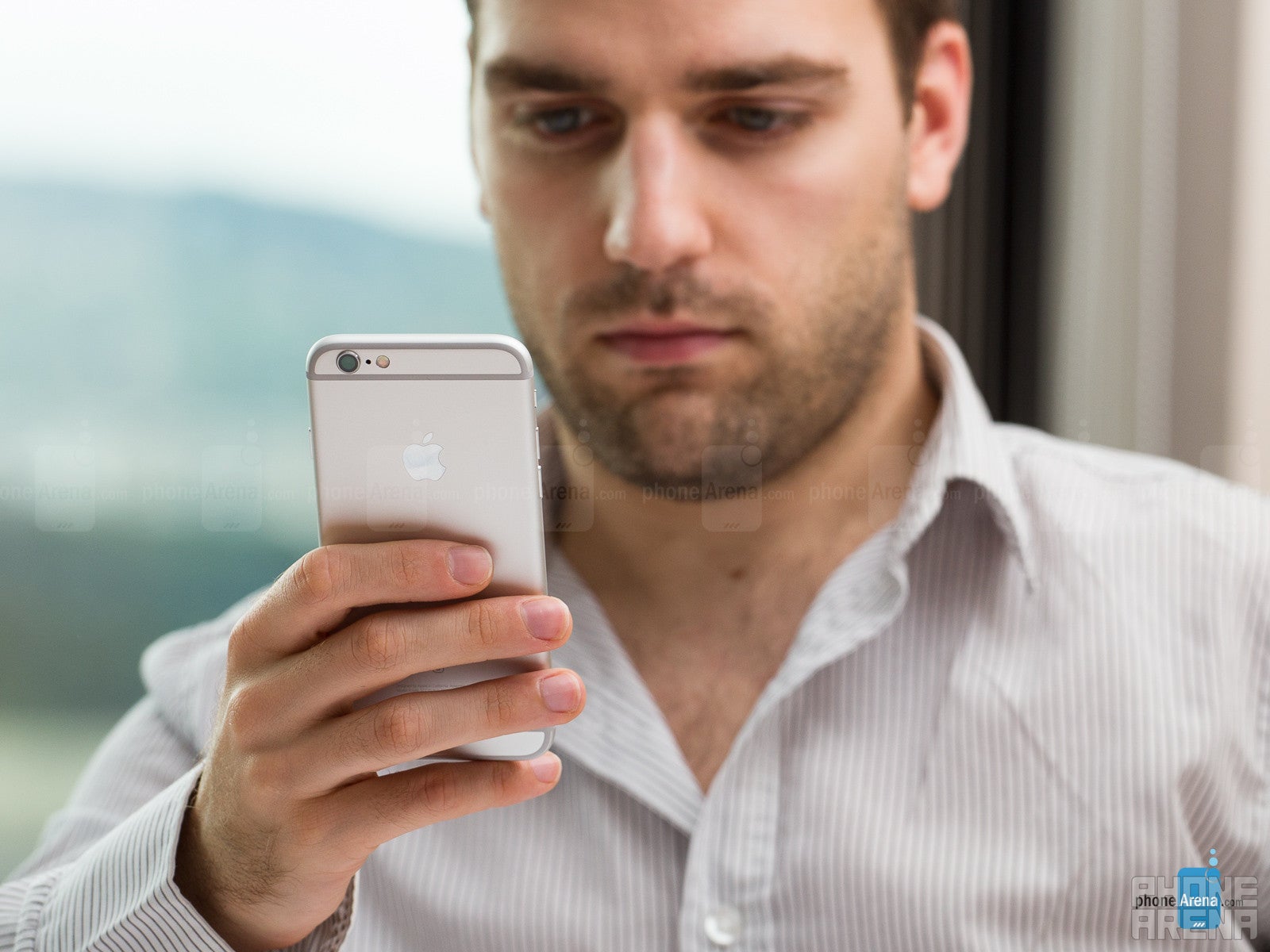
Indeed, real-world usage has us convinced that one can easily enjoy the iPhone 6s for up to 2 days of moderate usage, without having to fear that the battery is going to die mid-day. Actually, the last-gen iPhone didn't seem much weaker than this as well, when it came to real-life results, though it came off a bit weak in our battery benchmark. Now, with the iPhone 6s and iOS 9, we think the benchmark results of the iPhone 6s are in line with those of other top-shelf, long-battery-life Androids. Now that this has been taken care of, the only remaining fronts we'd like to see Apple conquer are fast charging and wireless charging – sadly, those are still missing from the iPhone 6s' area of competence.
Conclusion
It's not every day that such a complete and coherent smartphone comes to market. Perhaps more thoroughly than any other time, though, this year's iPhone 6s has become the center of so much technological advancement, that it's able to gain a surprising amount of lead against its counterparts.
That is not to say the Apple iPhone 6s is necessarily the best in each and every department; rather, it means there doesn't seem to be an area where it comes off as incompetent. And, as a matter of fact, it does prove to the best on a remarkable number of frontiers.

Along with its intuitive software environment, however, the iPhone 6s offers top-shelf technology that enables its users to effortlessly enjoy all the contemporary features that they expect from such a high-level smartphone, including apps, games, music, and camera. But it's not in the availability of the features themselves that its excellence resides – it's in the way the iPhone 6s realizes them that makes it special. The great design and build quality mean the customer will constantly feel that urge to reach for their smartphone. Not necessarily to check their Facebook feed, but simply to hold and feel it. The vivid, yet color-accurate display translates into a window where images and works of art are not blown out of proportion, but reproduced in a way that's appreciative of their authors' work. The cutting-edge chipset that ticks under the hood? Well, the silicon alone wouldn't have been capable of delivering such high and stable frame-rates, but due to the fact that iOS is specifically optimized to take full advantage of it, the phone ends up delivering an unprecedented fluidity of movement, and immediacy of action.
Now, all of this... goodness, comes at a price, and a rather high one at that. Whether or not you should pay that price is a question whose answer depends on more than one factor, and is by no means a firm 'yes'. However, if you've been wondering what makes the iPhone so 'special', or why does Apple succeed in breaking its sales records each year, when so many other phone manufacturers are struggling to make a buck, then we can at least address these conundrums: it's because the high price is justified. But don't be mistaken, it's not justified by CPU cores, gigabytes or RAM, or screen-to-size ratios – those come relatively cheap. It's justified by the enormous care and devotion with which this product has obviously been created.
This year's iPhone 6s manages to shake off the perception that 'S'-generation iPhones are less exciting than their “full-fledged” predecessors (or successors), and it does so by not only building upon the already strong foundation of the iPhone 6, but actually introducing radically new, thought-out, meaningful concepts. Expect competitors to follow suit with pressure-sensitive screens of their own soon. Dressed in rose gold, of course.
Software version of the reviewed unit: iOS 9.0.1
A warm thanks goes to Mobile Fun for providing us with a review unit!

UPDATE: You can now read our iPhone 7 review and iPhone 7 Plus review!
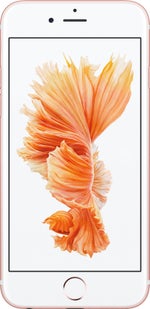
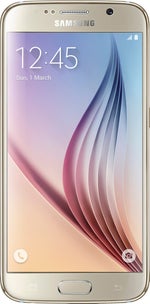
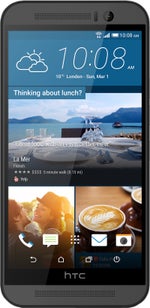
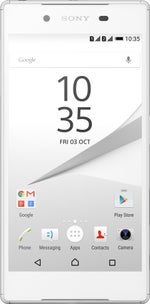
























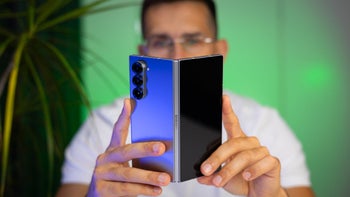










Things that are NOT allowed: